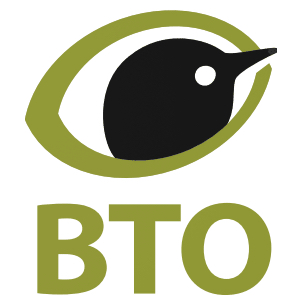What are fieldfares?
The fieldfare is a large colourful thrush
How big are Fieldfares?
When do fieldfares migrate to Britain?
Many birds migrate to Britain during the autumn months, including the colourful fieldfare. Fieldfares tend to remain at their breeding grounds in Scandinavia and continental Europe until food sources, such as rowan berries run out.
Once the berry crop on the Continent has been exhausted the birds will arrive in the UK to make the most our milder winters.
These large, beautiful thrushes usually start to arrive in the UK from mid-September (Scotland) to mid-October (southern England) and by the end of the winter there can be up to 750,000 individuals here.
They can be seen feeding and roosting in large flocks.
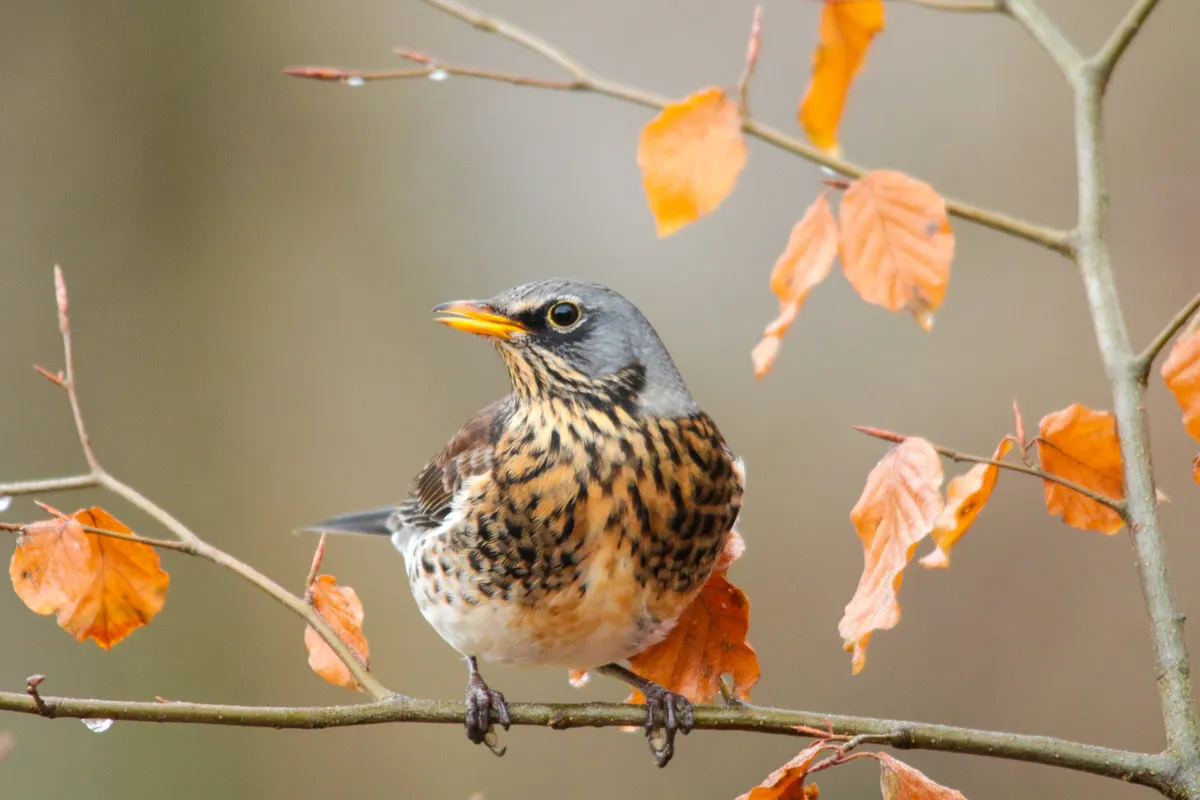
Why are they named fieldfares?
This large thrush goes by different names in other countries but our name for it, ‘fieldfare,’ comes from the Anglo-Saxon word ‘feldware’ which means ‘traveller of the fields.’
Where do fieldfares live in the UK and where you can see them?
Once the fieldfare has arrived in the UK it heads to open, agricultural land to hunt for invertebrates, such as earthworms.
These birds tend to be nomadic, moving around the country as they use up their food sources and therefore earning the ‘traveller’ part of their name.
As food sources run out, and when the winter begins to bite, they usually journey south and west across Britain, in search of milder weather.
They are sociable birds, and can be found in very large flocks, occasionally mixed in with other thrushes or starlings.
Towards dusk, they congregate to roost together and, if a tall hedge or tree is selected, they all face the same direction when they sleep.
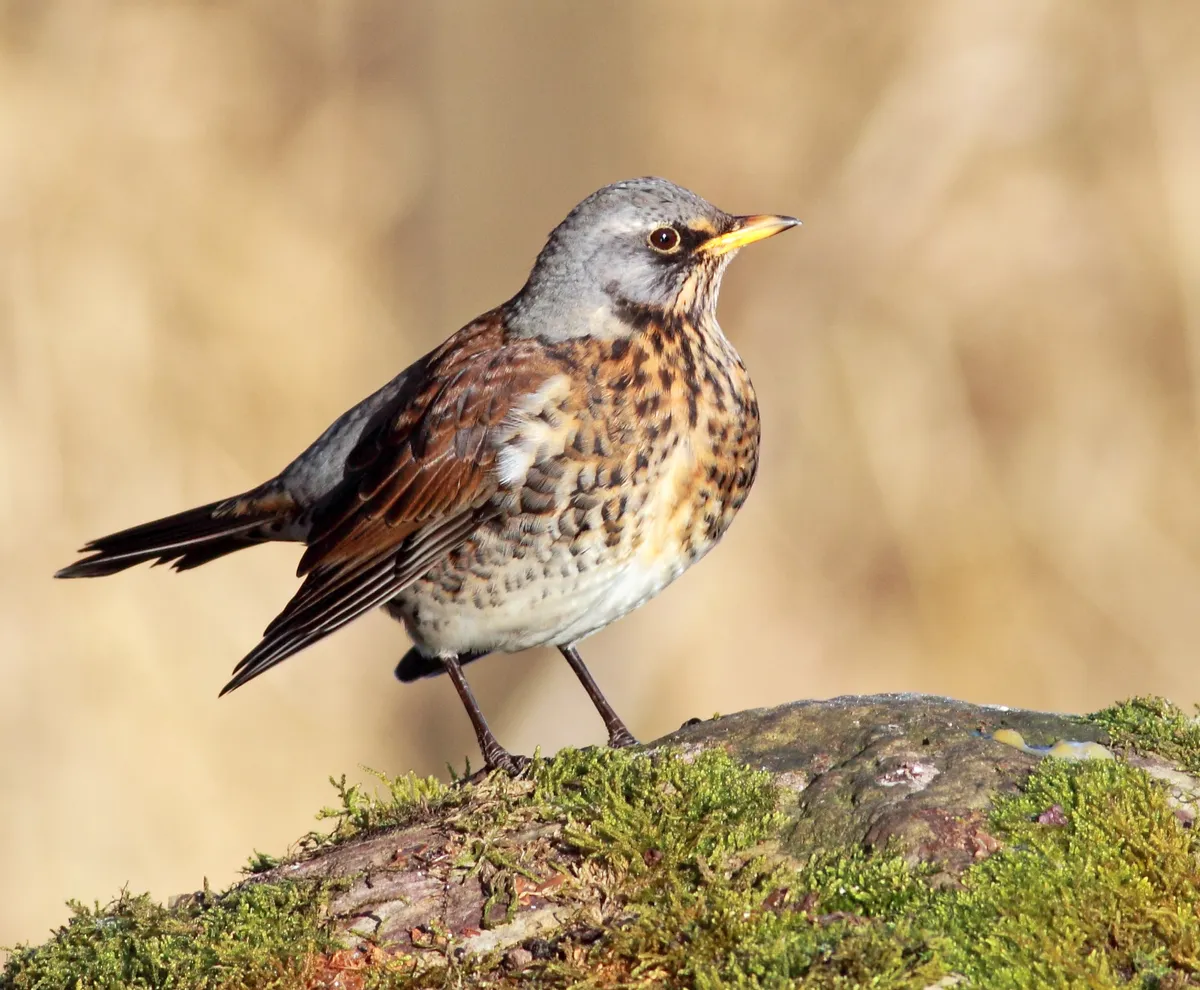
Can you eat fieldfares?
The fieldfare is a bird that has been historically hunted for food. There is evidence from AD 150 that the Romans enjoyed fieldfare and, in Germany, they were officially hunted until the early 20th century.
One record shows that in the 17th century, approximately 600,000 fieldfares were caught in one season by Prussian trappers.
Those sorts of numbers are no longer taken, but in some continental countries the birds may still be trapped or hunted between September and February.
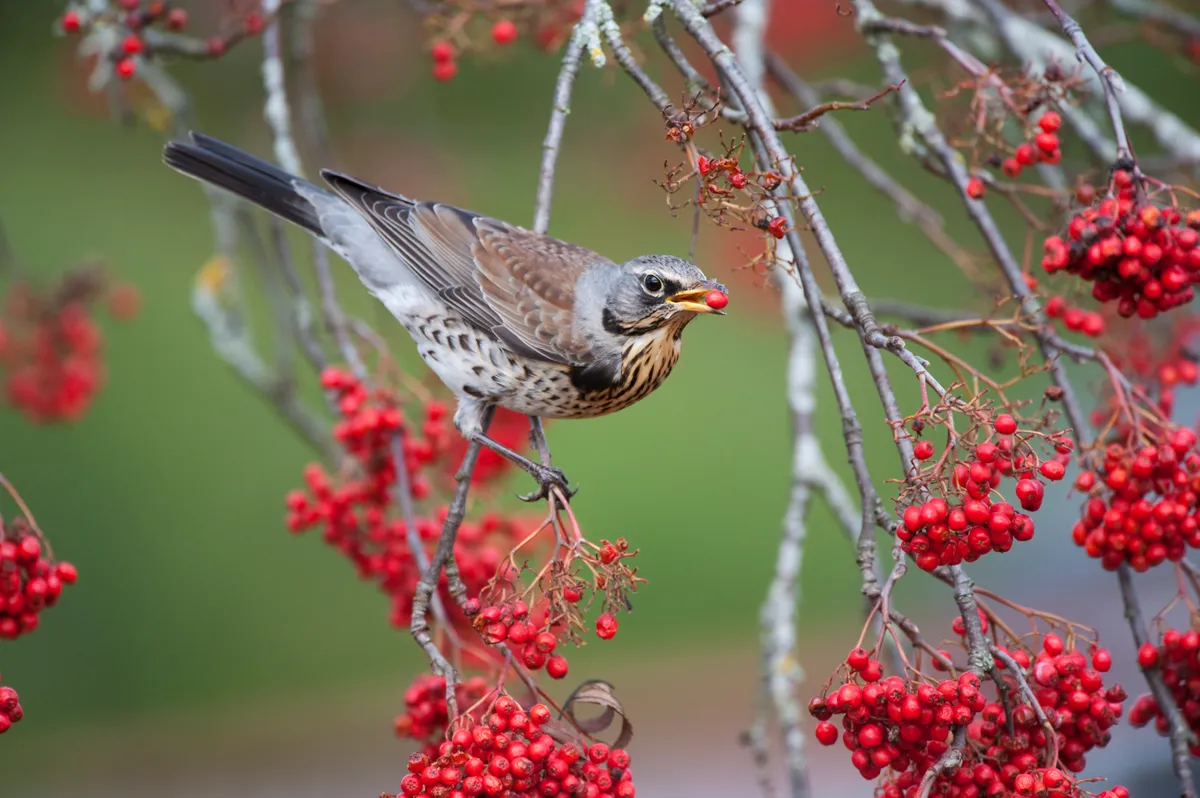
What do fieldfares eat?
Many people think of fieldfares as birds that eat fruit.
However, it isn’t until the ground becomes frozen and they can no longer feast on soil invertebrates that they turn their attention to other food sources.
This is when you might find fieldfares in your garden because the fruits they particularly enjoy include windfall apples and berries, such as holly, hawthorn and dog rose.
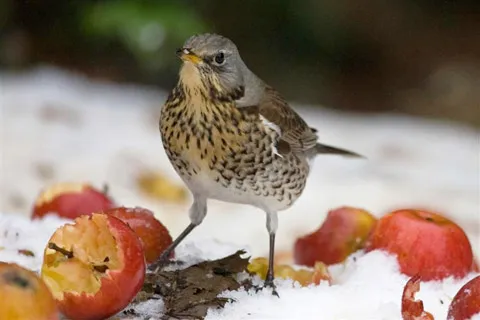
Do fieldfares breed in Britain?
Most fieldfares have left the UK by late April, but a few pairs remain to breed in northern Britain.
The fieldfares that leave may not be the same as those that come back the following winter. The BTO’s Ringing Scheme has shown that some of ‘our’ fieldfares have wintered in continental Europe, in countries such as France.
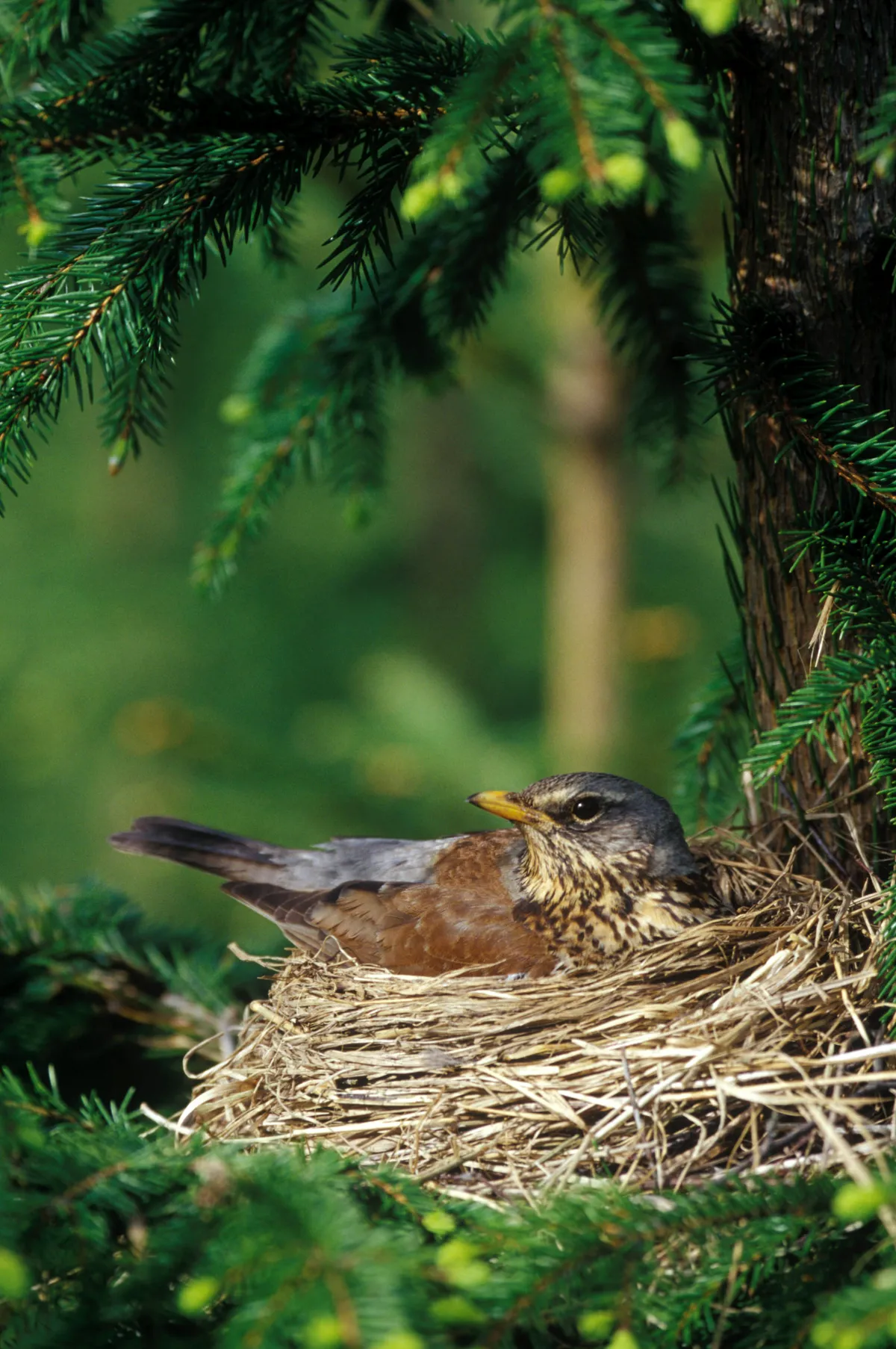
How to identify a fieldfare
The fieldfare is a large thrush, similar to a mistle thrush, but more upright. It has a blue-grey head, a paler grey-rump, red-brown wings, a black tail, heavy spotting below and a yellow-ochre wash across the chest.
If you’re still not sure that you’re looking at a flock of fieldfares, wait for them to take flight – they make a loud, dry ‘chook-chook’ call.
Main image © John Harding
The British Trust of Ornithology (BTO) works in partnership with over 40,000 volunteer birdwatchers to chart the fortunes of UK birds.
